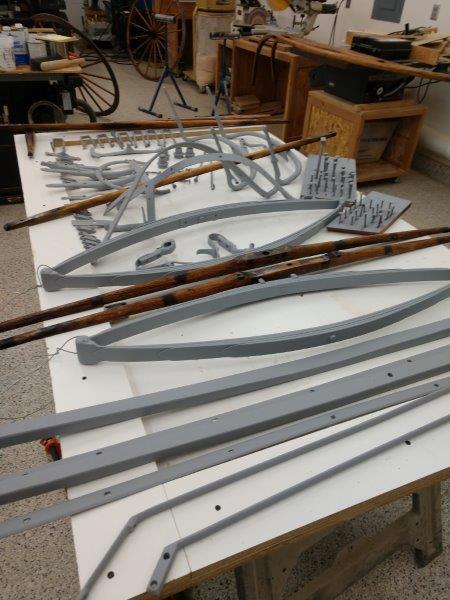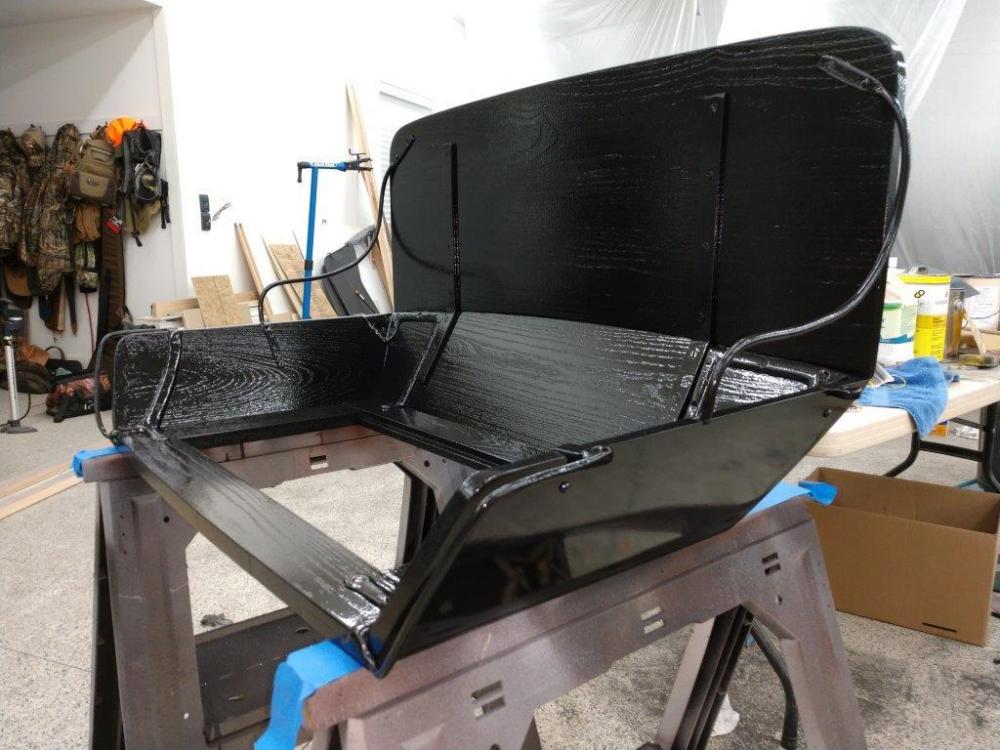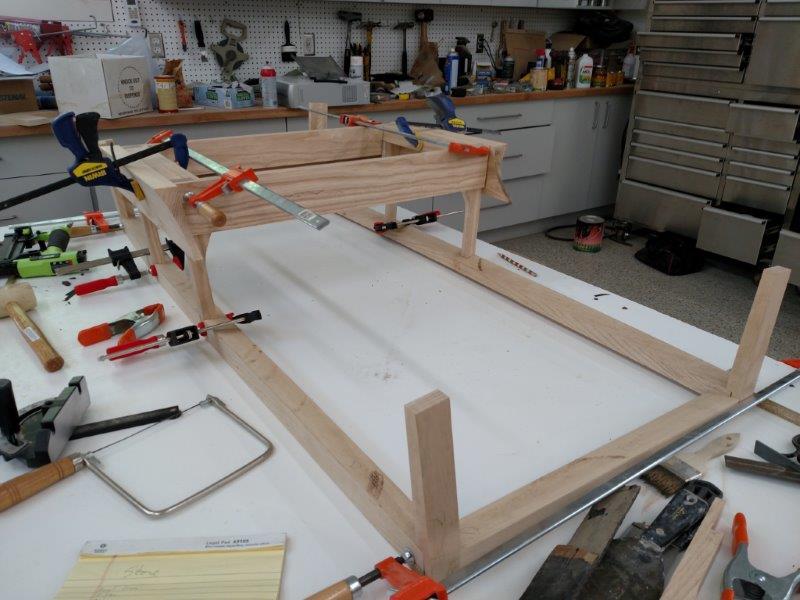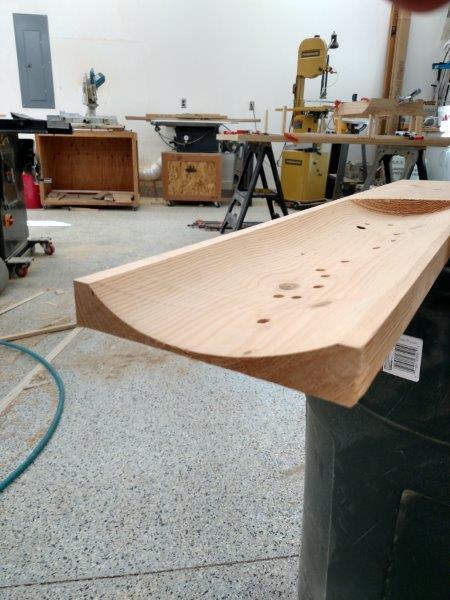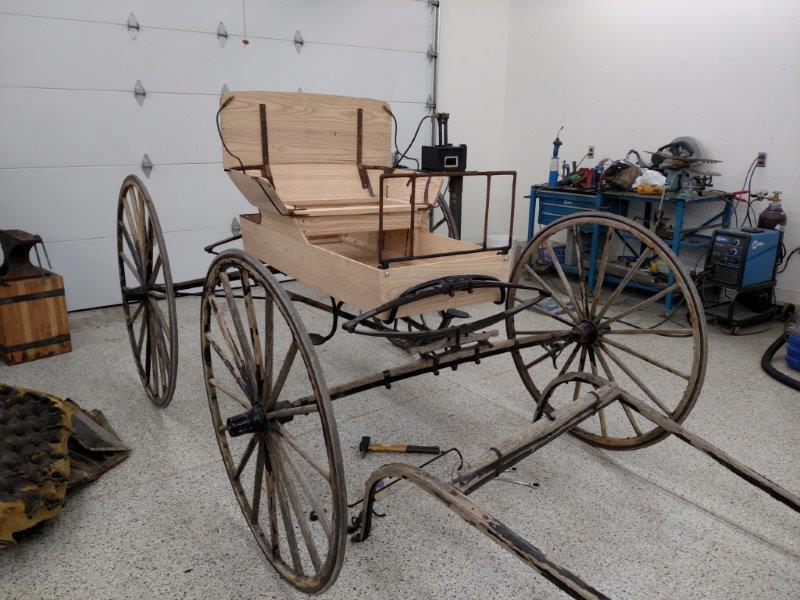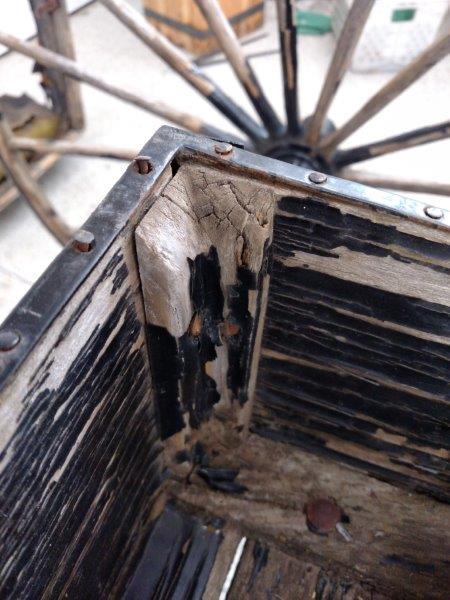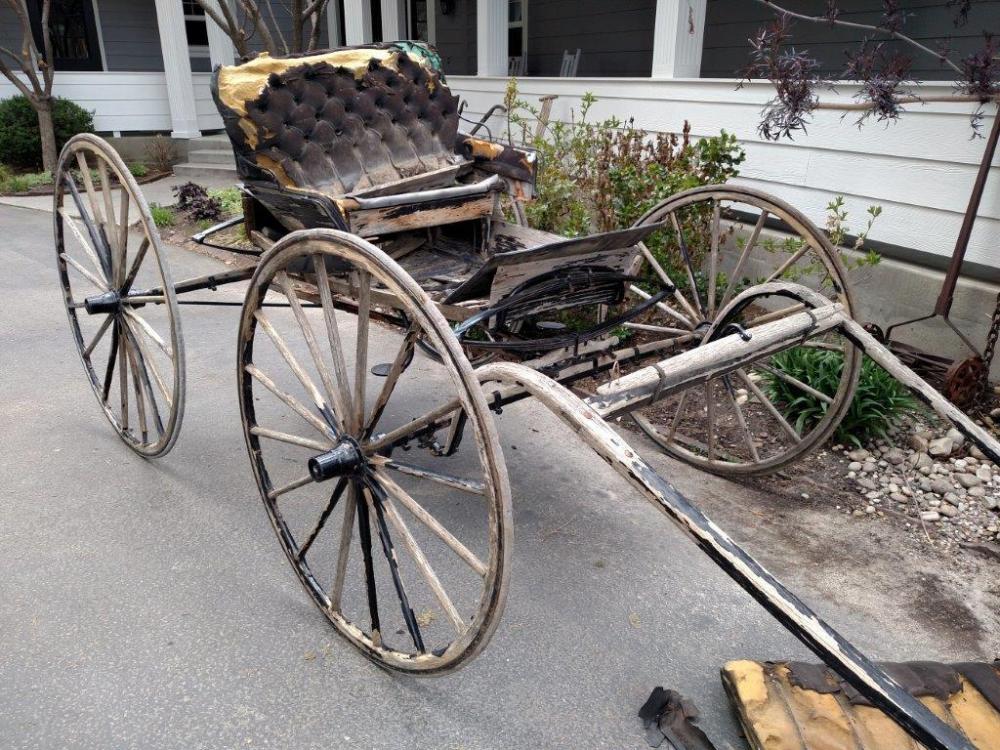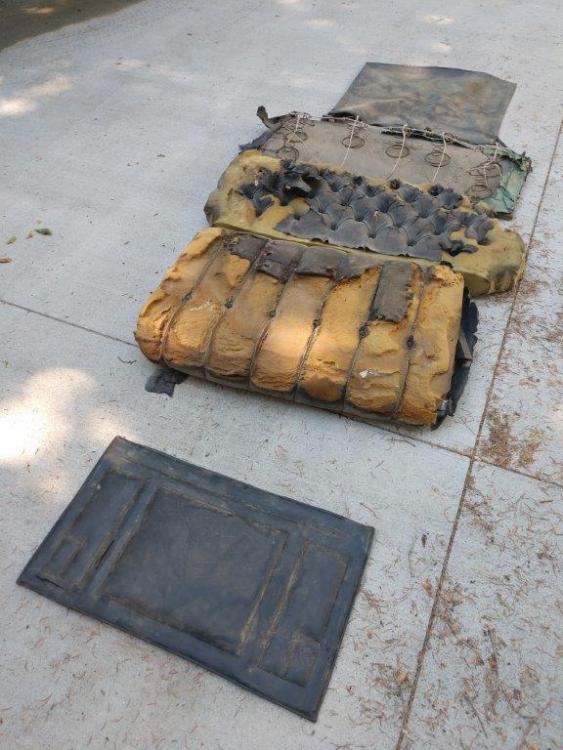
EdJ
Members-
Posts
11 -
Joined
-
Last visited
Content Type
Profiles
Forums
Events
Blogs
Gallery
Everything posted by EdJ
-
Next task was cleaning up all the metal pieces of the carriage spending hours at the blasting cabinet. One problem I ran into is that there were a lot of pieces longer than my 4ft wide blast cabinet. I sandwiched to pieces of OSBwith a hole to accommodate the longer pieces without making too big of mess. No wit is time to setup a paint booth. I selected an old fashioned marine paint and primer that will handle the expansion and contraction of the wood and sprayed everything with a pressure pot setup (handles thinker paint) on the spray gun. The downside to the old oil alk paint is that it takes forever to dry waiting 48 hours between coats. As seen in the picture below, I was filling the grain that is not covered by the leather upholstery with the primer and sanding it out. Very tedious job. Every little piece had to be painted separately for later assembly. Where I sanded the filled grain I was pretty close to obtaining a mirror finish. Almost ready for assembly.
-
Back safely from the motorcycle trip. The next phase of the project was the running gear and single tree. Dismantling the wood from the steel was pretty easy other than there were some seized bolts occasionally and I had to order some replacement axle straps (holds the wood cap on the steel axle). Attached is a picture of the fifth wheel bolt that the front axle pivots on when turning. The nut snapped the threads off and I had to re fabricate it. The half moon fits in the spring perch (next pic) preventing the bolt from spinning. The next few weeks were spent scraping all the old paint and chalking off the axle caps, wheels and the single tree. It took roughly 4 hours per wheel to scrap and sand. The wood looks new but has some an checking in the grain. Note in the above picture from the center moving out. There is a sovern hub with a wood core, spokes, then fellows, then steel tire, and then rubber tire. Most of the spokes were it pretty good shape other than some bowing. There is a slight gap at the end of the spoke to the fellow and then a slight gap again to the steel tire. Most of this is all due to 120 years of shrinkage. It is possible to resize the fellows ans steel tire on the spokes to tighten it up but it costs about the same as purchasing new wheels. I decided to leave as is and see how much they would tighten up with some TLC. I mixed up a concoction of 1/3 each boiled linseed oil, turpentine, and spar varnish and heated it up to 160 degrees and foam brushed it on the wood. The old wood sucked it up and it took 3 coats per wheel with the 4th coat eliminating the turpentine providing a slight top coat for uv protection. After drying for 3 weeks the finish turned out with a nice rustic patina. The wheels tightened up substantially but I would not go any faster than a walk with a horse. If I sent them in for a full tire job I would probably end up with some new spokes and maybe a fellow or two. Since I like the way they turned out I decided to keep them as is until a need arises.
-
With pictures, deconstruction and measurements taken it was time to start rebuilding. First issue was that I determined the lower stringers on the box were bent providing a bit of boat shape to the box. Never bent wood before but determined that with a heat gun and clamps I could do it dry rather than steam. Now I could make the lap joints and corner blocks. On both sides of the seat support there are large progressive coves (4.5 inches.) Router bits do not go that big so alternatives were required. I found a way of using the table saw and a diagonal fence where you take progressive passes at slightly higher blade heights. Test piece picture below. Glued and clamped everything up and built the seat. Notice the lower rear of the seat is slanted back and arched at the top. Fitting the vertical piece on the arch was a challenge and had to be fitted by hand. Note all the irons that hold the seat together including the dash and the trunk frame. While I tried to measure the rotten wood accurately, every piece of metal had to be lengthened or shortened slightly to fit the new assembly. Cutting, welding, heating up in the forge and bending. Off on a 6 day motorcycle adventure trip. Will post again in a week.
-
As I began the project pictures were necessary to identify how the whole thing was put together. All the Wood above the springs would have to be replaces due to rot. I had to measure and calculate the angles and sizes of each component. The box was constructed with perimeter stringers and corner blocks. In the middle there is a raised frame that the seat would sit on. In the middle there is a raised frame that the seat would sit on. The seat frame base was build with lap joints. Arm rests were beveled out and additionally flared from back to front.
-
Thank you all for your comments. It was a fun project as to learning how to do everything from the perspective of how did they do that 120 years ago without all the power tools we/I have today. Some of you had requested some more detailed pictures of the process. I am working on getting some of the pictures off my prior phone that had some problems. Should have it resolved soon. Also, I have no Idea what brand it is, but have seen others while researching things that appear to have the same axle layout and seat setup. I have to thank this website for providing me a lot of information on sewing machines, skivers, thread, tips and techniques. I have not sewn anything since 1975 skipping school and playing with my moms machine in the basement. Ended up with a new Juki, off brand bell skiver and a button press in the shop. Can never have enough tools. Ed
-
I have watched several of Cechalo videos and they provided great information. I know there is not a lot of sewing here but every project is an excuse to buy a new tool and this is only one of many projects to come. There is a guy locally selling a Chandler 304-64 with additional leather working tools and a cheap drill press, asking $1,000 but that's not a flat bed machine. But i could be fun for other projects.
- 5 replies
-
- sewing machine
- carriage
-
(and 3 more)
Tagged with:
-
Well its time to expand into new disciplines. I have restored and rebuilt a 100+ year old one horse carriage except for the upholstery, dashboard and trunk. Just ordered a couple of 3 oz hides and now need a machine to sew with. As far as I know there are no industrial machine dealers around here in Idaho so I need a machine that would easily serviced if needed possibly by a residential machine technician (if that is even an issue). Anyway I have pretty much decided to buy new unless something pops up regionally. As to what else I plan to do with it, I never know. But I do have lots of ideas. Belts, sheaths, boat cover repairs, furniture cushions, wallets, ect. I would hold the line at holsters and heavy leather as initially the type of machine necessary would not be ideal for my current project based on discussions in this forum. From reading forums I would probably like an 18" arm Servo Motor Gear reduction Looking for brand and model recommendations. In addition what additional supplies and attachments should I be purchase for/with the machine (feet, needles, thread size)? No specific budget but I guess I will be spending 1 - 2 k.
- 5 replies
-
- sewing machine
- carriage
-
(and 3 more)
Tagged with:







